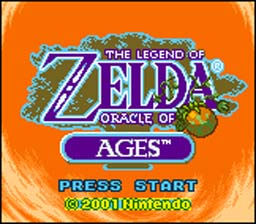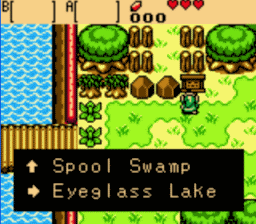(Nintendo, 1998; Game Boy Color)
 This one may not be a shock to you if you read the #18 entry in this list. Within the first month of me getting a Game Boy Color, I was treated to my first ever game in the Legend of Zelda series. Link's Awakening DX- much like Wario Land II, in fact- is a colourised version of a game for the original, greyscale Game Boy. The GBC, as it happens, was my first Nintendo console. Those first few months were crucial and turned me from a Sega fan into a lifelong Nintendo fan.
This one may not be a shock to you if you read the #18 entry in this list. Within the first month of me getting a Game Boy Color, I was treated to my first ever game in the Legend of Zelda series. Link's Awakening DX- much like Wario Land II, in fact- is a colourised version of a game for the original, greyscale Game Boy. The GBC, as it happens, was my first Nintendo console. Those first few months were crucial and turned me from a Sega fan into a lifelong Nintendo fan.Link's Awakening DX is a fantastic entry in the Zelda series and played a big part in swinging the needle in the direction of Nintendo for me. The game plays like any of the other Zelda titles that preceded, with various weapons and items at Link's disposal. One day while exploring the seas, Link's boat is destroyed and Link awakens (clever, eh?) on Koholint Island, a mysterious uncharted island where the strange locals all refer to a bizarre deity known as the Wind Fish. Link is told that if he wants to escape Koholint Island, he must awaken the Wind Fish. To do so, he has to collect eight magical musical instruments to play the lullaby of the Wind Fish.
 The island is home to all manner of Zelda bad guys from Octoroks to Tektites to a clan of Moblins. Link must traverse the dungeons of Koholint, defeat numerous bosses- including many familiar faces- and get the rare weapons and items along the way. There are all kinds of great items to pick up, including the Power Bracelet, which lets you lift heavy objects, Roc's Feather, which lets Link jumps over pits and the almighty Hookshot, which can be launched at foes across the screen and drag Link across canyons.
The island is home to all manner of Zelda bad guys from Octoroks to Tektites to a clan of Moblins. Link must traverse the dungeons of Koholint, defeat numerous bosses- including many familiar faces- and get the rare weapons and items along the way. There are all kinds of great items to pick up, including the Power Bracelet, which lets you lift heavy objects, Roc's Feather, which lets Link jumps over pits and the almighty Hookshot, which can be launched at foes across the screen and drag Link across canyons.The boss fights are all challenging and use the items found in each dungeon in ingenious fashion. You'll be leaping over Moldorm's tail with Roc's Feather, hurling the Genie's bottle until it shatters with the Power Bracelet, charging at Slime Eyes with the Pegasus Boots and yanking out Slime Eel's innards with the Hookshot, etc, etc, etc.
The music is as good as you'd expect from a leading Nintendo title, with a host of catchy tunes that'll stick in your head. The dungeon music sets the mood for each of the levels, the overworld music is a wonderfully hummable remix of the main Zelda theme tune, the boss battle music is simple, yet manages to be an earworm that you can nod your head to while defeating the evildoers.
 Perhaps most vitally in a Zelda game, the map design is clever, with each of the dungeons requiring you to use your items intelligently to survive and complete them and areas of the map requiring you to do to the same in order to advance to the next area. You'll want to explore every screen to fill in all the sections on your map screen.
Perhaps most vitally in a Zelda game, the map design is clever, with each of the dungeons requiring you to use your items intelligently to survive and complete them and areas of the map requiring you to do to the same in order to advance to the next area. You'll want to explore every screen to fill in all the sections on your map screen.The DX version of Link's Awakening not only adds colour to the game (making it vibrant and beautiful to look at) but also adds a whole new dungeon that can only be played using the GBC. The dungeon's main theme is- as you may have guessed- colour and requires you to use the game's now colour screens to solve puzzles and defeat enemies. The prize for accomplishing this is a choice of new tunics that will allow Link to either double the damage he causes or halve the damage he takes.
 The Legend of Zelda: Link's Awakening DX is a masterclass of game design. If you have any interest in good video games whatsoever, you owe it to yourself to play this, one of Nintendo's finest titles.
The Legend of Zelda: Link's Awakening DX is a masterclass of game design. If you have any interest in good video games whatsoever, you owe it to yourself to play this, one of Nintendo's finest titles. 







